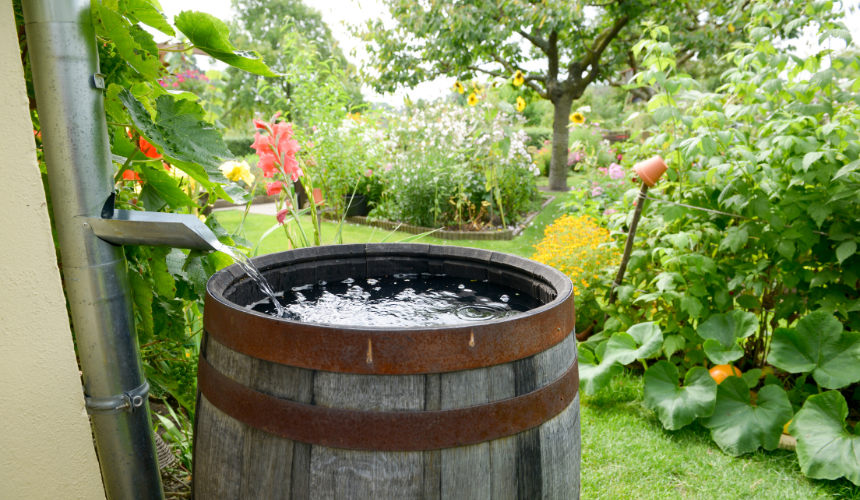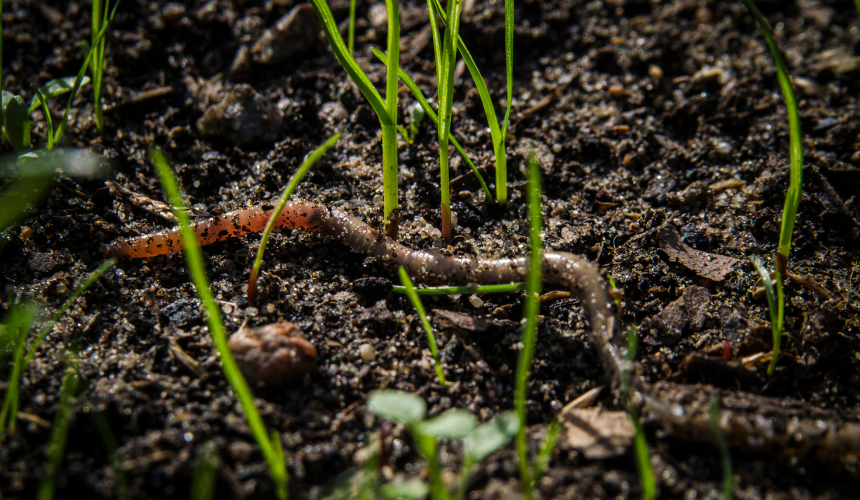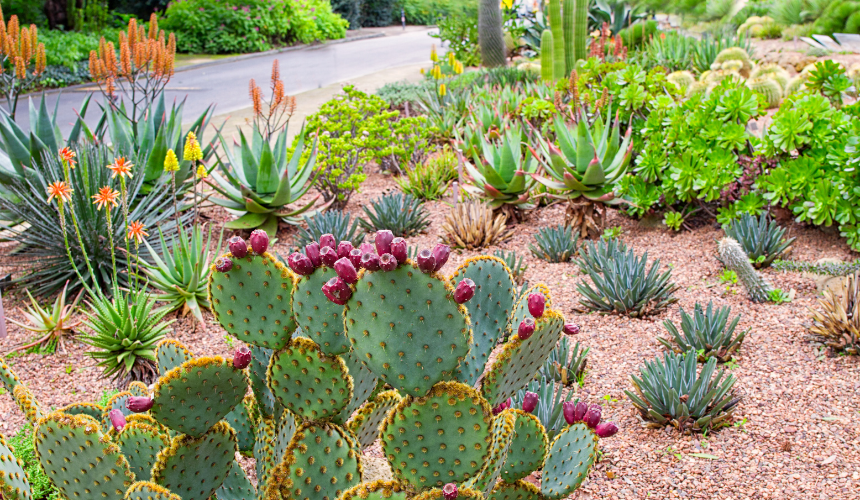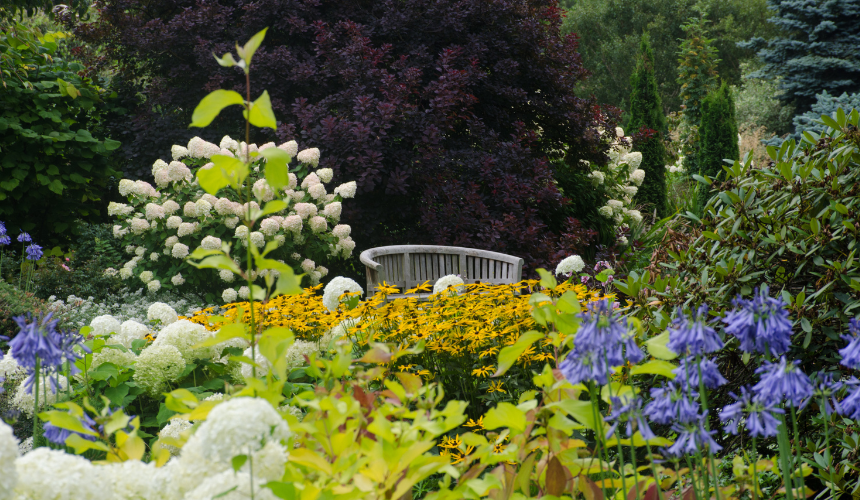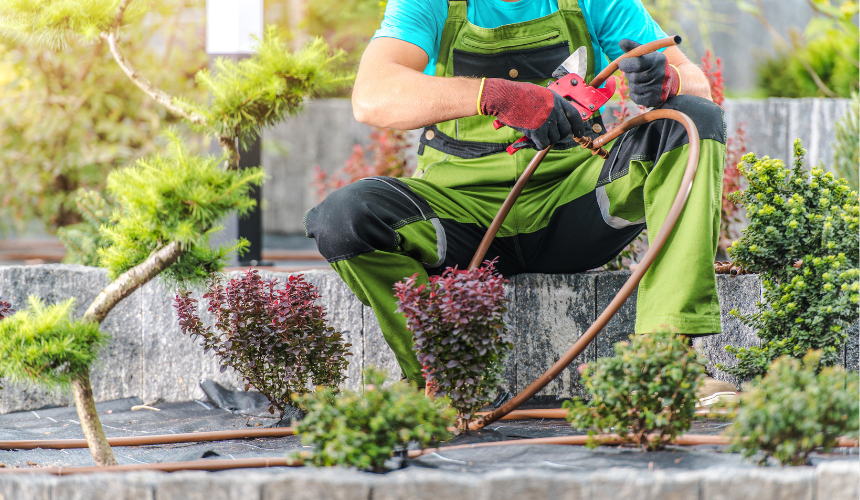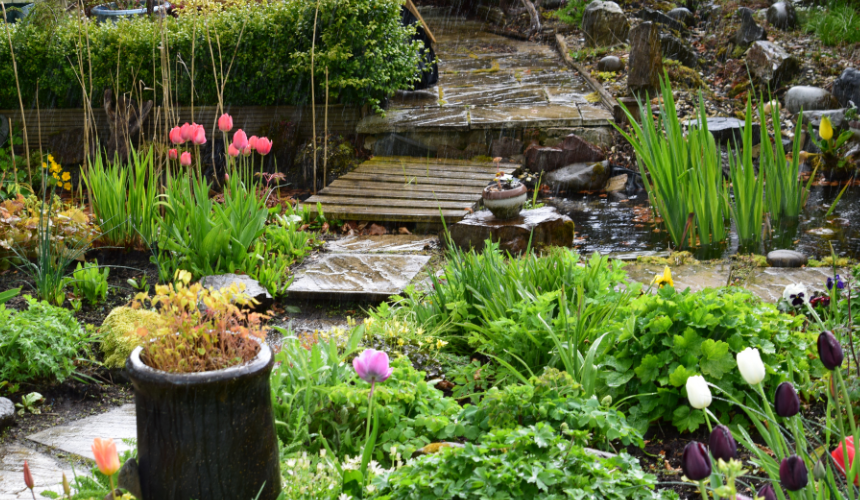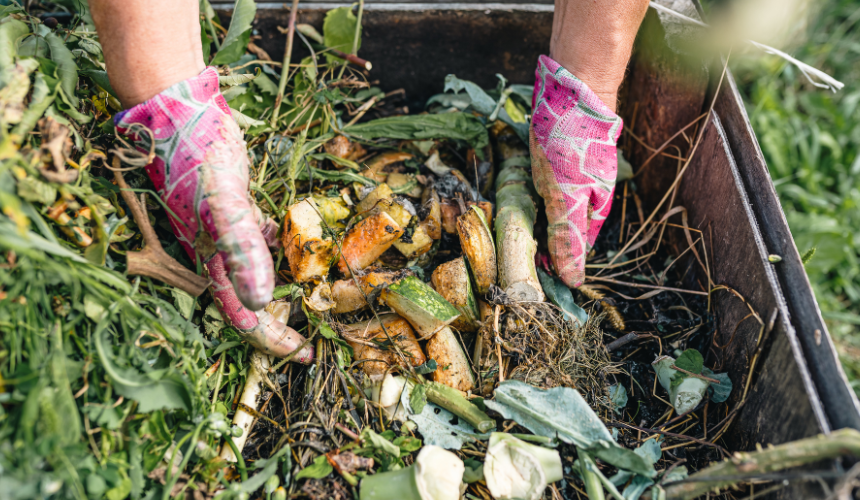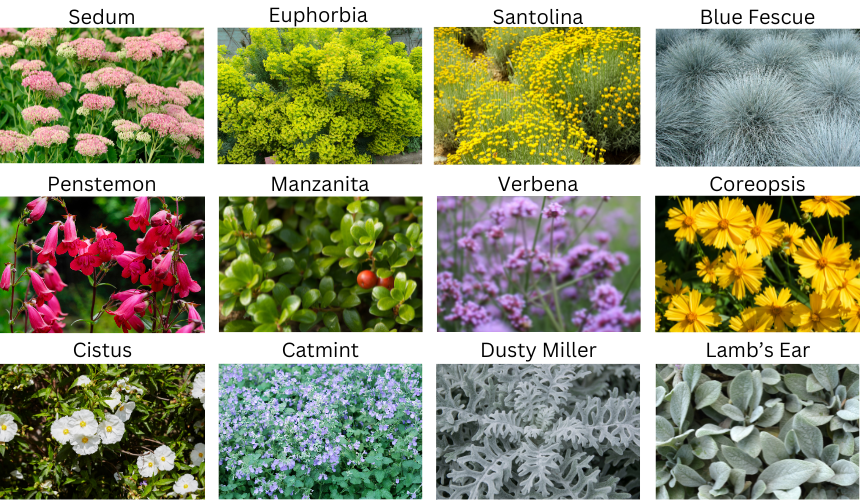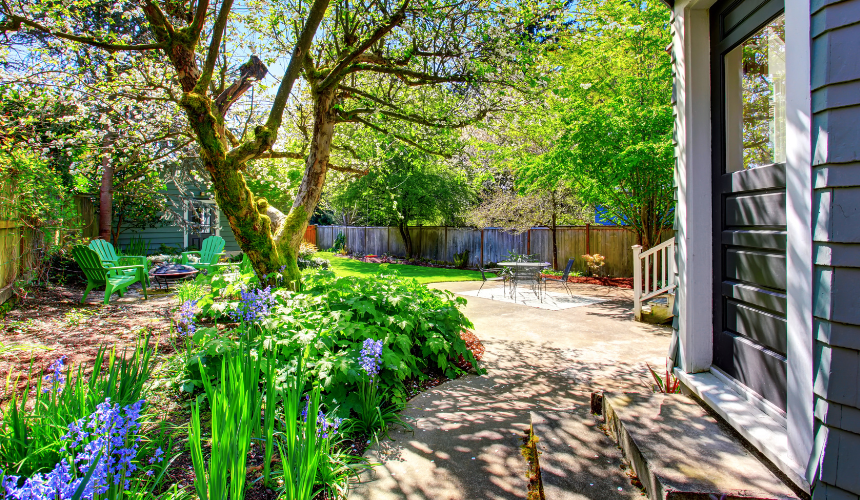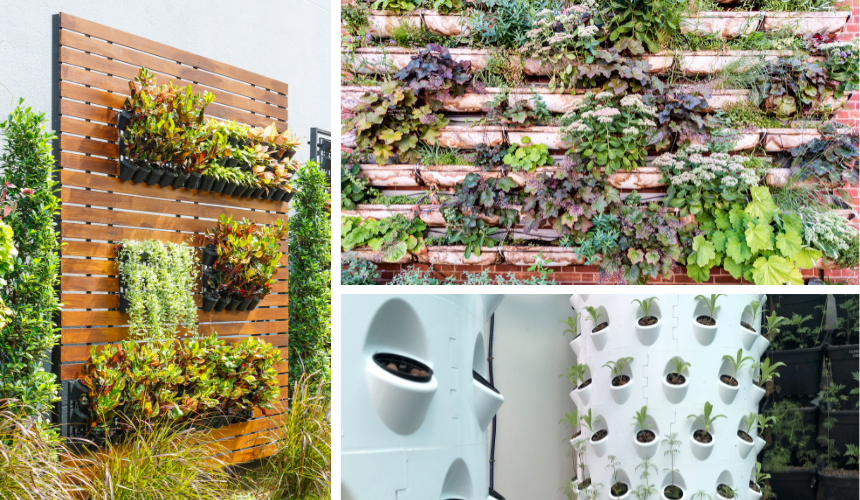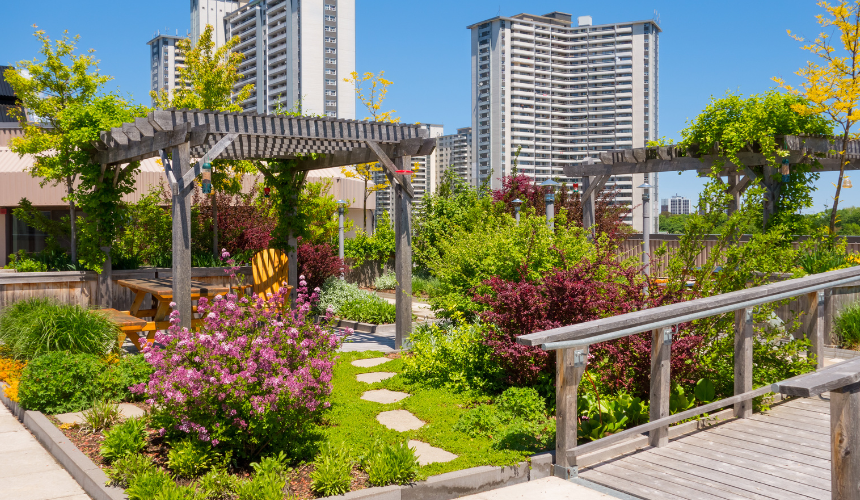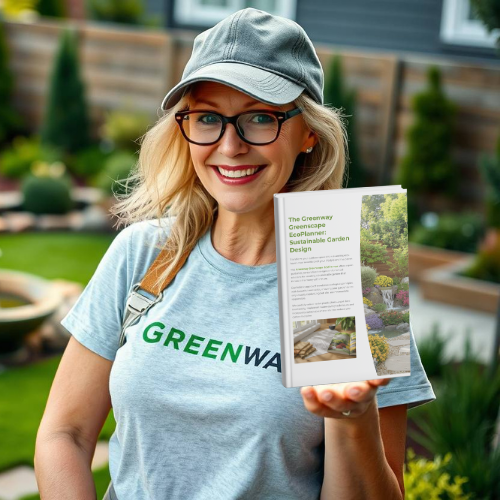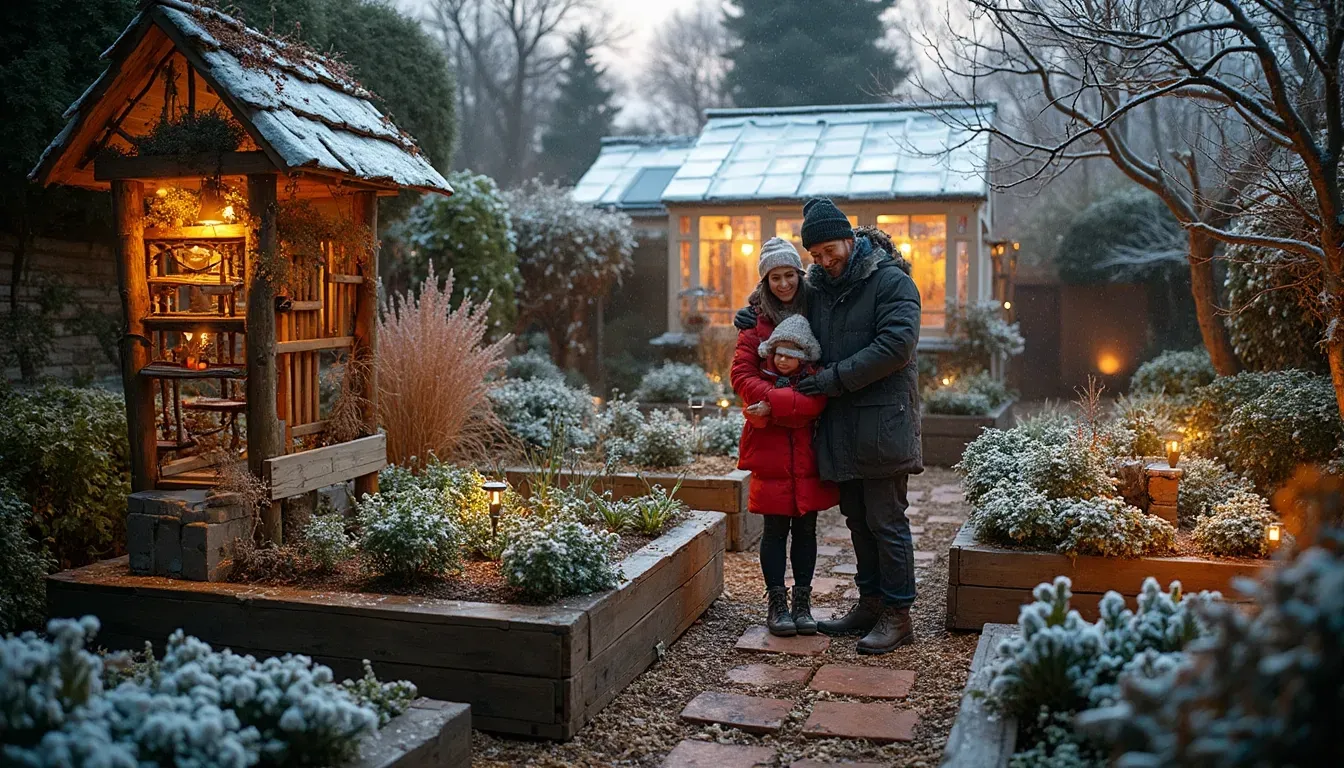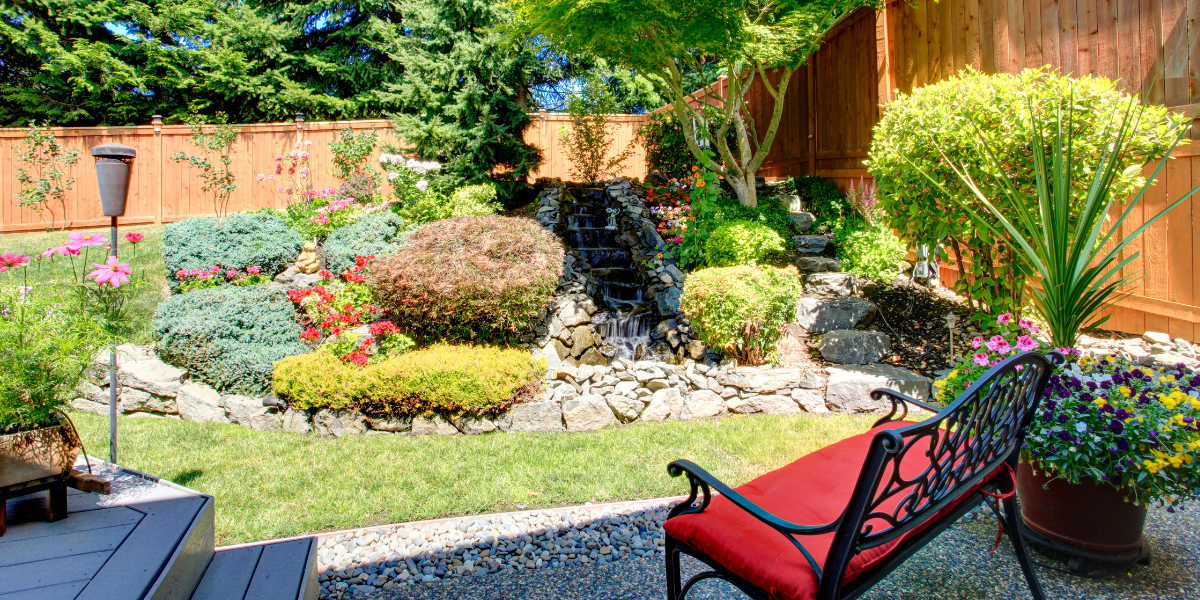Eco-Friendly Landscaping: Transform Your Garden and Save the Planet
The Green Revolution in Your Back Garden
Eco-friendly landscaping isn't just a trend; it's a lifestyle choice that benefits you and our precious Earth. Here, we will take a look into practical and sustainable landscaping practices. You can learn about the incredible benefits of going green, how to select and nurture native plants, discover water conservation techniques, and more. This 5-minute read will arm you with the knowledge to create a thriving, sustainable garden.
Let's dig in!
13 Greener Benefits of Eco-Friendly Landscaping
1. Healthier Environment - Eco-friendly landscaping helps reduce your carbon footprint. Minimising chemical use and opting for organic alternatives contribute to healthier soil and air quality. Healthier soil means more robust plant growth and improved air quality, which can enhance your overall well-being and that of your neighbours.
2. Biodiversity Boost
- Creating a diverse garden with native plants supports local wildlife, providing habitats for birds, bees, and other beneficial insects. This biodiversity boost helps maintain a balanced ecosystem, ensuring that natural predators keep pest populations in check, reducing the need for chemical interventions.
3. Cost Savings - Sustainable gardens can significantly cut down on water and maintenance costs. Native plants, for instance, are adapted to local conditions and require less water and fertiliser. Additionally, using organic compost and natural mulches reduces the need for expensive chemical treatments.
4. Enhanced Aesthetic Appeal - Eco-friendly landscapes are often more visually appealing due to their natural look and feel. Using a variety of native plants, flowers, and sustainable design elements creates a more dynamic and engaging garden. Seasonal changes in native flora ensure your garden remains vibrant and exciting throughout the year.
5. Improved Soil Health - Healthy soil is the foundation of any garden. Eco-friendly practices like composting, mulching, and avoiding chemical pesticides help maintain soil fertility and structure. Improved soil health improves water retention, nutrient availability, and plant growth.
6. Water Conservation - Water-saving techniques such as drip irrigation, rainwater harvesting, and drought-tolerant plants can drastically reduce water usage. This lowers your water bills and helps conserve a precious natural resource vital in areas prone to drought.
7. Increased Property Value - Sustainable landscaping can increase your property's value. Homes with eco-friendly gardens are often more attractive to buyers who appreciate a well-designed landscape's lower maintenance costs, environmental benefits, and beauty. Investing in sustainable landscaping can offer substantial returns if you sell your property.
8. Climate Resilience - A garden with native plants and sustainable practices is more resilient to climate change. Native plants are better adapted to local weather patterns, and sustainable practices like mulching and rainwater harvesting can mitigate the effects of extreme weather conditions, ensuring your garden thrives year-round.
9. Reduced Noise Pollution
- Strategic planting of trees and shrubs can act as natural sound barriers, reducing noise pollution from nearby roads or neighbours. This creates a more peaceful and tranquil outdoor space for you to enjoy.
10. Personal Well-being - Spending time in a well-maintained garden has been shown to reduce stress and improve mental health. Eco-friendly gardens, in particular, provide a natural, calming environment where you can relax, unwind, and reconnect with nature. Gardening is also a healthy physical activity that can improve overall fitness and well-being.
11. Community Impact - Adopting eco-friendly landscaping practices creates a positive example for your community. Encouraging neighbours to adopt similar practices can create a more significant collective impact, promoting a more sustainable and environmentally conscious neighbourhood. Community gardens and green spaces also provide social benefits, fostering a sense of belonging and shared responsibility.
12. Reduced Waste - Eco-friendly landscaping encourages the recycling of organic waste through composting and mulching. This practice reduces the waste sent to landfills and creates valuable resources for your garden. Additionally, using recycled materials for garden structures and decorations supports a circular economy.
13. Fire Resistance - Using fire-resistant plants and creating defensible spaces can help protect your property in areas prone to wildfires. Native plants are often better suited for these purposes, providing aesthetic and safety benefits.
Characteristics and Properties of Fire-Resistant Plants
Deciduous trees and shrubs shed their leaves annually and are generally more fire-resistant than evergreens. Groundcovers with thick, fleshy leaves, such as aloe or succulents, are also excellent choices as they are both fire- and drought-resistant. Fire-resistant plants are less likely to ignite, and their foliage and stems do not significantly contribute to fire intensity.
When selecting fire-resistant plants, look for these characteristics:
- Supple Leaves: Moist leaves with high water content
- Watery Sap:
Sap that is watery and has little odour
- Open Growth Structure:
Plants with space between branches
- No Dead Wood: Plants free from dead branches or twigs
- Thick Bark: Bark that does not easily peel away from the trunk
To enhance the fire resistance of your plants, regularly water and fertilise them with compost and clear away dry debris. Using drip irrigation can help conserve water while ensuring your plants receive adequate moisture. Pruning or thinning shrubs and trees to maintain an open structure will prevent the accumulation of dead material and further reduce fire risk.
Here are 10 fire-resistant plants native to the UK:
- Common Yarrow (Achillea millefolium) - Known for its feathery foliage and clusters of small, white flowers.
- Wood Spurge (Euphorbia amygdaloides)
- Features striking lime-green flowers and glossy, dark green leaves.
- Heather (Calluna vulgaris) - Provides year-round interest with its vibrant purple, pink, or white flowers.
- Meadowsweet (Filipendula ulmaria) - Boasts fluffy, creamy-white flower clusters and a pleasant fragrance.
- Foxglove (Digitalis purpurea) - Tall spikes of bell-shaped flowers in shades of purple, pink, and white.
- Common Rockrose (Helianthemum nummularium) - Offers bright yellow, orange, or pink flowers and evergreen foliage.
- Betony (Stachys officinalis) - Displays spikes of purple or pink flowers and attractive, serrated leaves.
- Wild Thyme (Thymus serpyllum)
- A low-growing plant with aromatic leaves and pink or purple flowers.
- Lady's Bedstraw (Galium verum) - Features clusters of small, bright yellow flowers and fine, feathery foliage.
- Germander Speedwell (Veronica chamaedrys) - Produces charming, bright blue flowers and pairs well with other perennials.
These plants are known for their fire-resistant properties, such as having supple, moist leaves, an open growth structure, and little dead wood.
The Importance of Choosing Native Plants
Understanding Native Plants
Native plants are species that have naturally evolved in a specific region. They're adapted to the local climate, soil, and ecosystems, making them resilient and low-maintenance.
Selecting the Right Plants
- Research:
Understand the native flora of your region. Local garden centres and botanical gardens are excellent resources.
- Soil Compatibility: Ensure the chosen plants are suitable for your soil type.
- Sunlight and Water Needs:
Select plants based on the sunlight exposure and water availability in different parts of your garden.
Benefits of Native Plants
- Low Maintenance:
Native plants require less water and fertilisers.
- Pest Resistance:
They are more resistant to local pests and diseases.
- Wildlife Support:
These plants provide food and shelter for local wildlife, promoting biodiversity.
Mulching
- Benefits: Mulch helps retain soil moisture, reduce weed growth, and improve soil health.
- Types:
Use organic mulches like wood chips, straw, or compost for the best results.
Water Conservation Techniques
Efficient Irrigation Systems
- Drip Irrigation:
Delivers water directly to the plant roots, reducing water wastage.
- Smart Sprinklers:
Use weather data to adjust watering schedules automatically, ensuring optimal water use.
Rainwater Harvesting
- Barrels and Tanks:
Collect rainwater from your roof and use it to irrigate your garden.
- Rain Gardens: Create shallow, planted depressions that collect and absorb rainwater.
Sustainable Garden Practices
Composting
Turn kitchen scraps and garden waste into nutrient-rich compost. Composting reduces waste sent to landfills and provides natural fertiliser for your plants.
Organic Pest Control
- Beneficial Insects: Encourage natural predators like ladybugs and spiders to control pest populations.
- Natural Repellents:
Use garlic spray, neem oil, or diatomaceous Earth to deter pests without harmful chemicals.
Xeriscaping
Design your garden to minimise water use. Xeriscaping involves using drought-tolerant plants and efficient irrigation techniques to create a beautiful, water-wise landscape. This sustainable landscaping method conserves water, reduces maintenance efforts, and supports a healthy environment.
Key Principles of Xeriscaping
Planning and Design:
- Start with a comprehensive plan that considers the natural layout of your garden, sun exposure, and existing vegetation.
- Group plants with similar water needs together to ensure efficient irrigation.
Soil Improvement:
- Improve soil quality by adding organic matter, such as compost, to enhance water retention and provide nutrients.
Efficient Irrigation:
- Implement drip irrigation systems or soaker hoses to deliver water directly to plant roots, minimising evaporation and runoff.
- Use timers and moisture sensors to optimise watering schedules.
Mulching:
Apply organic mulch, such as wood chips or straw, to retain soil moisture, reduce weed growth, and improve soil health.
Drought-Tolerant Plants:
- Select plants that thrive in low-water conditions and can adapt to your local climate.
- Incorporate a mix of native plants, succulents, and other drought-resistant varieties.
Grass Alternatives:
- Replace traditional lawns with low-water ground covers, ornamental grasses, or hardscaping elements like gravel or pavers.
Maintenance:
- Regularly monitor and adjust irrigation systems, remove weeds, and prune plants to maintain an open growth structure.
Examples of Drought-Tolerant Plants for Xeriscaping
- Sedum (Sedum spectabile):
Also known as "ice plant" or "stonecrop," this succulent features fleshy leaves and clusters of star-shaped flowers that bloom in late summer and autumn. It thrives in dry, well-drained soil and is an excellent choice for rock gardens and borders.
- Euphorbia (Euphorbia characias):
Known for its striking architectural form and unique lime-green flowers, this evergreen shrub is highly drought-tolerant and can add a dramatic flair to any garden.
- Santolina (Santolina chamaecyparissus):
Also known as lavender cotton, this plant features silvery foliage and small, yellow button flowers.
- Blue Fescue (Festuca glauca):
A compact ornamental grass with blue-green foliage that adds texture to garden borders.
- Coreopsis (Coreopsis verticillata):
A perennial with bright yellow, daisy-like flowers that attract pollinators and thrive in dry conditions.
- Verbena (Verbena bonariensis):
Tall stems, topped with clusters of purple flowers, provide a striking vertical element in the garden.
- Manzanita (Arctostaphylos spp.):
Evergreen shrubs with smooth, reddish bark and small, bell-shaped flowers are excellent for hedges and ground cover.
- Penstemon (Penstemon spp.):
Also known as beardtongue, this plant has tubular flowers in various colours that attract hummingbirds.
- Cistus (Cistus spp.):
Also known as rockrose, it produces large, papery flowers and is well-suited to rocky, dry soils.
- Catmint (Nepeta spp.):
Aromatic foliage and spikes of blue or purple flowers are known for attracting bees and butterflies.
- Dusty Miller (Senecio cineraria):
Silver-grey foliage adds a striking contrast to garden beds and borders.
- Lamb's Ear (Stachys byzantina):
Soft, velvety leaves that are highly drought-tolerant provide a unique texture in the garden.
Eco-Friendly Landscaping Techniques
Permaculture Principles
- Design for Sustainability:
Create a self-sustaining garden by integrating various elements that support each other.
- Zones:
Divide your garden into zones based on how often you use them, placing frequently used areas close to your home.
Green Roofing and Vertical Gardens
- Green Roofs:
Install rooftop vegetation to improve insulation, reduce stormwater runoff, and provide wildlife habitat.
- Vertical Gardens: Use walls and trellises to grow plants vertically, maximising space and creating green beauty.
Edible Landscaping
Add fruit trees, vegetable beds, and herb gardens to your landscape design. This approach provides fresh produce and enhances biodiversity.
Embrace Sustainable Gardening for a Greener Future
Eco-friendly landscaping is more than just a gardening trend—it's a commitment to a healthier, more sustainable future.
By choosing native plants, conserving water, and adopting sustainable practices, you can create a beautiful, thriving garden that benefits you, your community, and the planet.
Ready to transform your garden?
Ready to See What
Your Garden Could Be?
If you’ve ever stood at your back door, cuppa in hand, wondering what’s possible -
this is your sign.
The
Greenway Greenscape EcoPlanner is more than a freebie, it’s your personal blueprint to a garden that looks stunning, works hard, and feels like your perfect corner of heaven - without costing the earth.
After you have received your guide...
Get Your Priority Access to The Greenway EcoPlanner Service and Transform Your Outdoor Space into a Sustainable Oasis
This is one of speciality services and the ultimate solution for environmentally conscious homeowners and garden enthusiasts looking to create a sustainable and beautiful outdoor space.
This comprehensive service package combines expert consultation with cutting-edge technology to bring your dream garden to life, all while promoting eco-friendly practices.
What's Included in the
Greenscape EcoPlanner Package?
- Site Visit by Our Expert Consultants
- Our experienced consultants will visit your site to assess the current landscape, soil conditions, sunlight exposure, and water sources. We'll discuss your vision, preferences, and any specific needs you have for your garden.
- 2D Garden Plan - We'll create a detailed 2D garden plan based on our site visit and consultation. This plan will include the layout of different zones, such as chill-out areas, dining spaces, potting sheds, patios, decks, and lawns. Each zone is designed to maximise functionality and aesthetic appeal while ensuring sustainability.
- 3D Animated Walkthrough - Experience your future garden before it's built with our immersive 3D animated walkthrough. This visualisation allows you to explore the design from various angles, providing a realistic preview of how each element will look and feel. It's a fantastic way to ensure every detail meets your expectations.
- Detailed PDF Report
- Our comprehensive PDF report includes the following:
- Sustainable Plant Suggestions:
A list of drought-tolerant and fire-resistant plants suitable for your garden, complete with planting and care instructions.
- Zoning Ideas:
Innovative ideas for creating functional zones include a chill-out area, dining space, potting shed, patio, deck, and lawn.
- Water Conservation Techniques:
Tips on implementing efficient irrigation systems, rainwater harvesting, and mulching to conserve water.
- Eco-Friendly Landscaping Practices:
Guidance on composting, organic pest control, and other sustainable gardening techniques.
- Maintenance Tips:
Advice on regular watering, fertilising, pruning, and debris clearing to keep your garden thriving and fire-resistant.
Why Choose
Greenway Greenscape EcoPlanner Service?
- Expertise:
Our team of experienced garden consultants are passionate about sustainable landscaping and brings years of expertise to your project.
- Personalisation:
We tailor every plan to your needs, preferences, and local environmental conditions.
- Innovation:
Leveraging the latest technology, we provide detailed plans and realistic visualisations to ensure your satisfaction.
- Sustainability:
Our focus is on eco-friendly practices that enhance the beauty and health of your garden while reducing its environmental impact.
Take the First Step Towards
Your Dream Garden
Ready to transform your outdoor space into a sustainable paradise?
Contact us today to schedule your site visit and start your journey with the
Greenway Greenscape EcoPlanner Service.
Together, we can create a garden that enhances your living environment and contributes to a greener, healthier planet.
Call 01202 022246 or
complete the form below for a call-back with more information.
Your dream of a stunning, sustainable garden is just a phone call away.
Let's build a better, greener future together.
The form below receives a priority response for Greenway Digest readers.
Enter your details below and we'll call you right back!
Please rest assured, your details will not be shared with any third parties.
Greenway will only contact you regarding your inquiry and other Greenway-related information.

